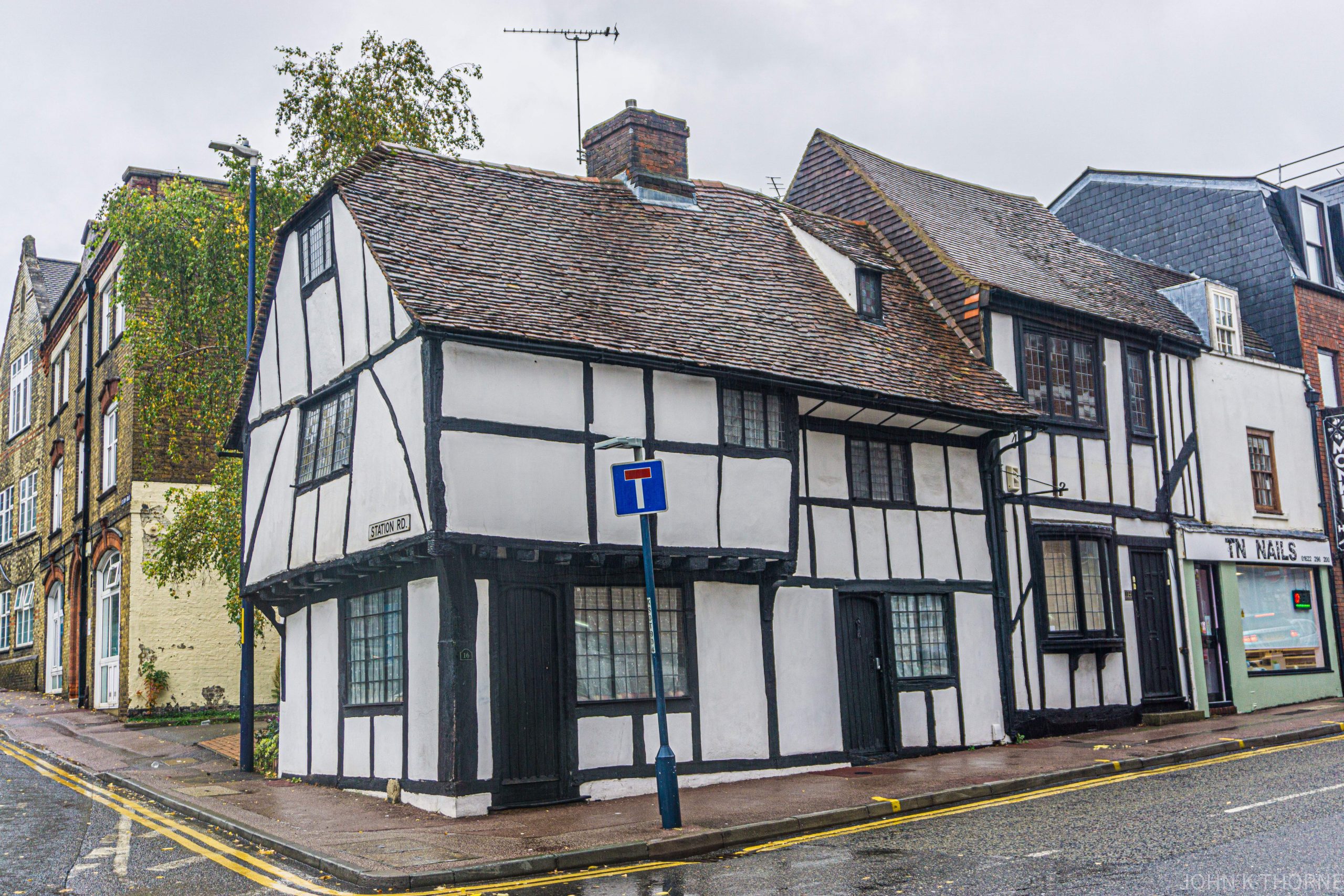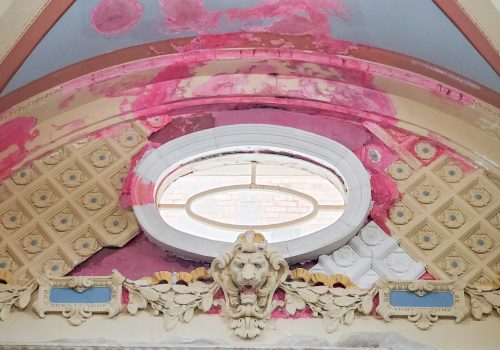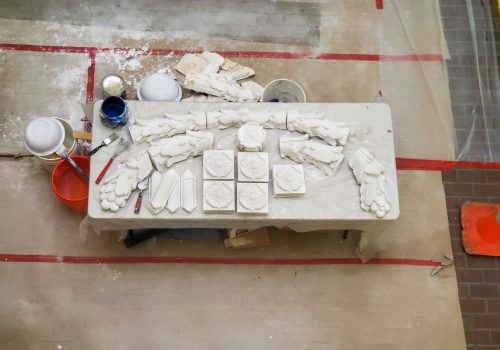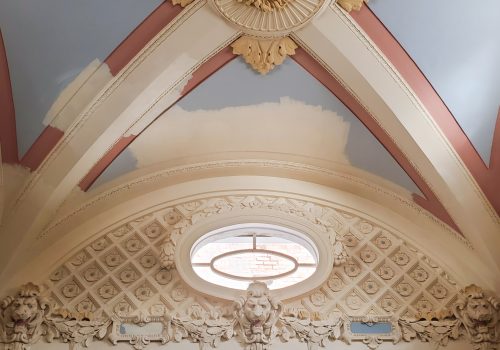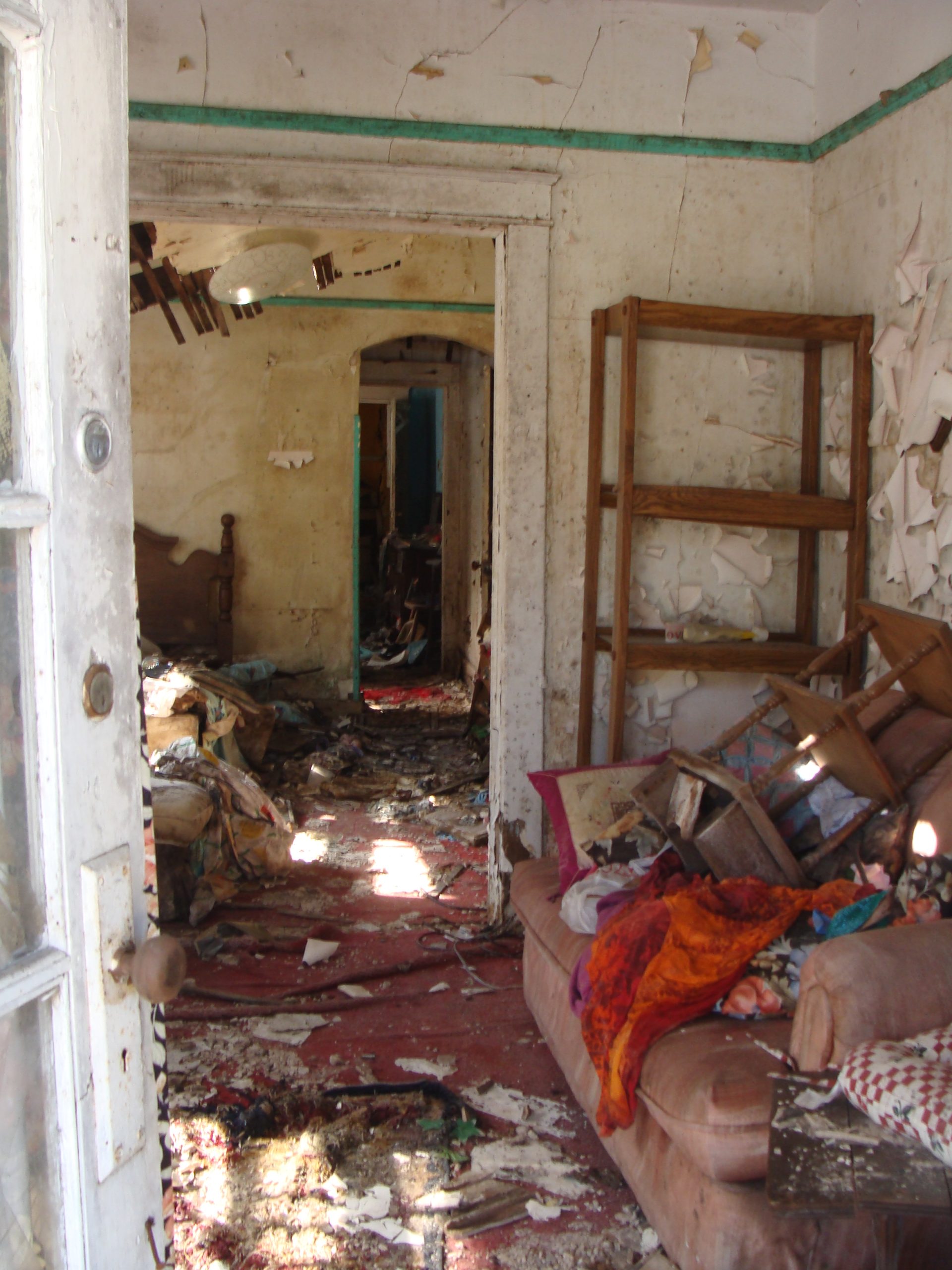In every construction project that requires new or upgraded walls, the decision between drywall and plaster must be made. However, in today’s world, it’s a no brainer – drywall always wins. Between the two is amazing history regarding how our world has used them in past centuries, as well as how they differ to bring different design ideas to life. Although one may be more popular than the other in today’s industry, they can both be used simultaneously for different purposes to bring character to any room.
History of Plaster and Drywall
Plaster has been around much longer than drywall! The first use of plaster was by the people of Ain Ghazal in Jordan during 7500BC. They used a mixture of crushed limestone and different materials, such as mud, clay, sawdust, or even animal blood at times. With the plaster, they covered their walls, floors, and hearths of their homes and built statues that are in many museums today.
The Egyptians also used plaster within their tombs. With other materials, they were able to create different colors to create hieroglyphics that depicted the life of the person. The use of plaster continued to spread across the Eastern hemisphere, especially into Europe.
Europeans began to popularize using plaster for finishes, but also decorative panels and installations with it called pargeting. With pargeting came the reintroduction of terracotta and the creation of Marmorino, a new application method that can be applied in different finishes. As time went on, reinforcements became more used with plaster, thus the use of laths in homes.
Laths are 1-inch-wide panels of wood that are nailed across the wall, which the plaster then is covered across. The plaster seeps between the laths creating a strong hold to the wall allowing for multiple layers. Lath plastering is very common in homes and business built before World War 2, but eventually faded away with the introduction of drywall.
Drywall was first invented in 1914 by the United States Gypsum Corporation (USGC) to protect homes from urban fires. Drywall was commonly referred to as ‘poor man’s answer to plaster walls’ as they were much more affordable at the time due to the easier installation and use of labor. As the beginning, drywall wasn’t very popular, until World War 2, where short staffing became a large issue. Due to men leaving the industry to fight, companies needed to find better ways to keep up with their work and began transitioning to using drywall. Throughout the war, drywall became the new normal and eventually kicked plaster to the curb. In today’s industry, drywall is the go-to for many, if not all, projects. While plaster may look nice when finished, the labor required compared to drywall takes three times longer, and much higher skill. Although the material costs are comparable, drywall not only saves a large chunk of time, but also a large chunk of change.
Installation Differences
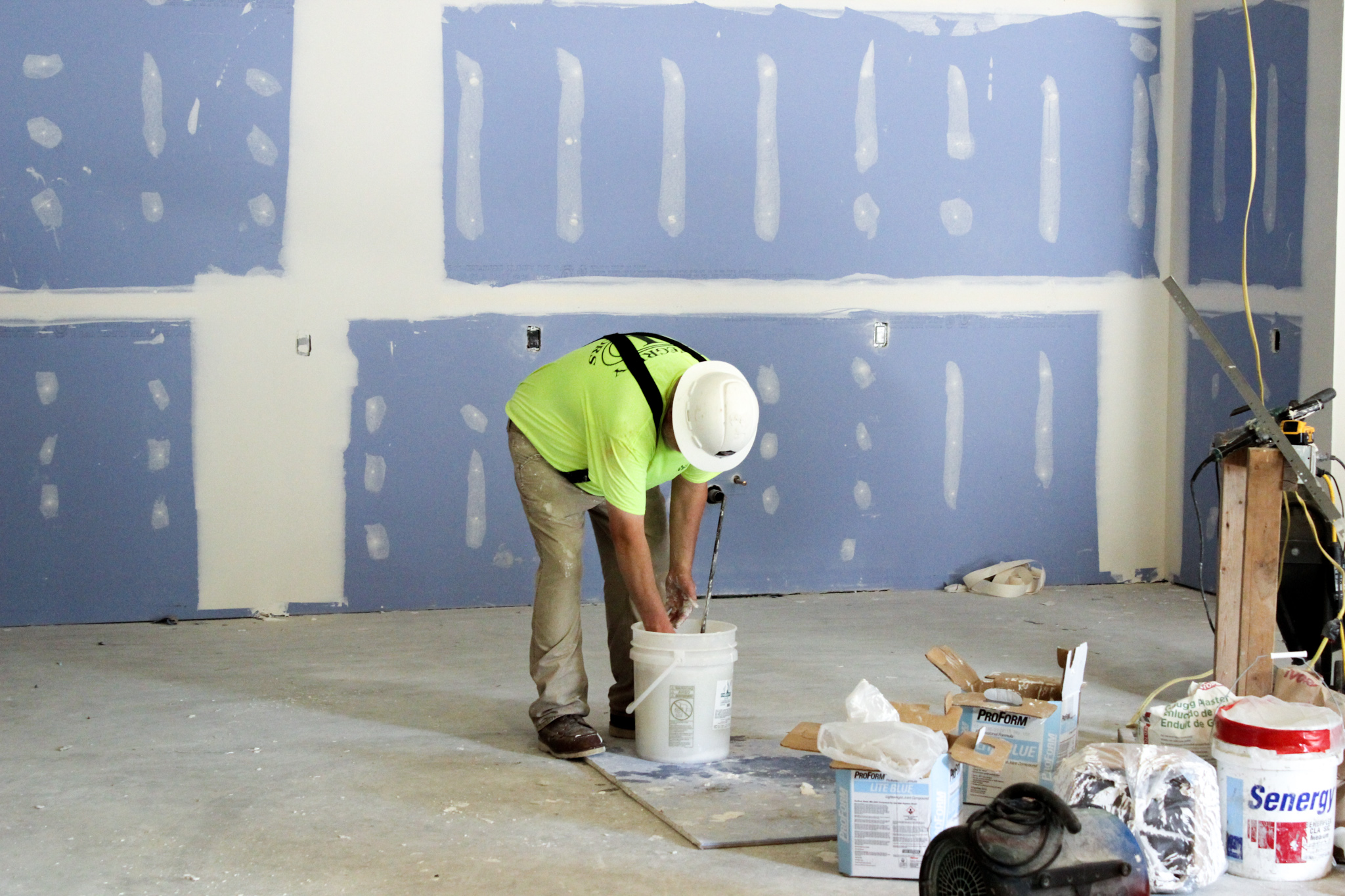
While these materials have the same purpose of creating walls, they both differ in their installation and overall functionality. Drywall is gypsum sandwiched between thin paper and can be ordered in many different sizes. Due to it being rigid, once contractors receive the order, it can be installed once all the work is completed that will be hidden within the walls, such as electrical and heating/cooling. Drywall can be installed either vertically or horizontally, however, the goal is to have the least number of joints possible. The more joints a room has, the more finishes must be done to prep for paint. The panels are then secured with screws into the wall studs, starting with the ceiling. Once that’s complete, the tops of walls follow with the bottom of the wall being the last to install. However, the bottom panels must be ½ inch off the ground to allow room for flooring to be installed later. Once all the panels are installed, a mud drywall compound and tape is used to seal off all the joints, corners, and screws. Once dried, sanding may be needed in areas of high relief, otherwise the room is ready for paint.
With plaster, the framework looks very different. In older homes, you’ll notice laths were used as well as typical framing. Laths are 1-inch-wide wood panels that span horizontally across the studs. There’s spacing between each board to allow plaster to sink between and curl over giving a strong hold. This allows the plaster to be layered until the proper thickness of the wall is achieved. With plaster being less popular to use in renovations, it has become a staple for creating decorative panels and trim, especially in historic renovations, such as our work at Clark Hill Law in the Atrium Office Center! For the renovations, our team from Integrity Interiors did incredible work for the cathedral ceilings! This required creating molds that matched the existing decals so we could make new plastered pieces to replace the broken and missing ones. While drywall and plaster have different timelines of their usage, it is possible to see either in uncommon places, or mixed with each other. Each have their pros and cons of why one might be better than the other, especially depending on the purpose of the constructed room.
Drywall Pros vs. Cons
- Quick and Easy Installation
- Good material for Insulated Areas and Hanging Objects
- Fire resistant
- Poor water resistance
- Poor flexibility
- Heavy, not easy to maneuver by yourself
Plaster Pros vs. Cons
- Can survive excessive water/moisture
- Easy to apply in uncommon shaped areas (rounded walls and corners)
- Great for soundproofing
- Lengthy installation and High Skill Needed
- Poor Signal Reach (WiFi, phones, etc)
- Hanging objects could cause extreme damage
Overall, both options are great for creating walls that will last. What really makes a difference is the environment the building is in, as well as the purpose of the room. For instance, due to Hurricane Katrina, neighborhoods had to be bulldozed because of the excessive mold that had grew in the walls from the flood. These houses were all drywalled as they were newer, however, one house survived the flood unscathed. Due to the basement being brick and the lower level having plaster walls, the home was sprayed down and cleaned following the hurricane and maintained its structural integrity. In the end, it is your decision on what type of walls you want. However, make sure you do your research because looks can certainly be deceiving when it comes to labor and longevity. If you liked this article, please share it with your friends via the icons below or leave a comment!
Share this Post



